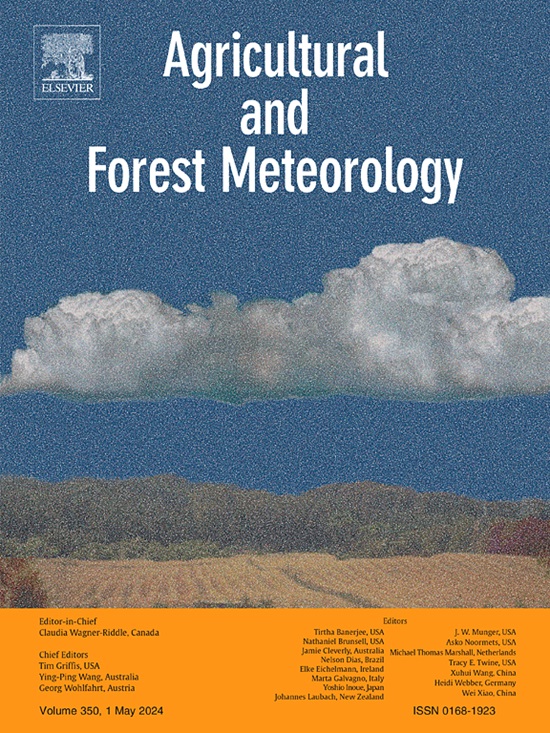Overstory and understory leaves warm faster than air in evergreen needleleaf forests
IF 5.6
1区 农林科学
Q1 AGRONOMY
引用次数: 0
Abstract
The limited homeothermy hypothesis states that leaves maintain their temperature within an optimal range for photosynthesis by increasing transpiration during warm conditions. Under limited homeothermy, plants may offset thermal stress caused by climate change. If this hypothesis is true, we should observe: 1) leaf temperature increasing slower than air temperature and 2) leaves cooler than air during warm conditions. We tested these predictions with an energy balance model for evergreen needleleaf forest sites in the National Ecological Observatory Network. A key feature of our model was its vertical stratification of the canopy, which allowed us to analyze vertical gradients in canopy temperature. This feature is especially important given that prior work has focused on the tops of forest canopies. Our results do not support limited homeothermy at any canopy position. In all canopy strata, leaf temperature increased faster than air and periods with leaves cooler than air were rare. In such cases, cooling was due to emitted radiation, not transpiration. But, when water was abundant, transpiration could produce mildly homeothermic behavior. We attribute these results to the needle-like shape of leaves in our study sites. This leaf shape increases boundary layer conductance and causes heat gain from surrounding air to overpower heat loss from transpiration when leaves are cooler than air. Our results indicate that needleleaf forests cannot avert thermal stress in a warming world. Thermal limits on photosynthesis and non-linear increases in respiration with temperature may weaken the role of evergreen forests as a global carbon sink.
求助全文
约1分钟内获得全文
求助全文
来源期刊
CiteScore
10.30
自引率
9.70%
发文量
415
审稿时长
69 days
期刊介绍:
Agricultural and Forest Meteorology is an international journal for the publication of original articles and reviews on the inter-relationship between meteorology, agriculture, forestry, and natural ecosystems. Emphasis is on basic and applied scientific research relevant to practical problems in the field of plant and soil sciences, ecology and biogeochemistry as affected by weather as well as climate variability and change. Theoretical models should be tested against experimental data. Articles must appeal to an international audience. Special issues devoted to single topics are also published.
Typical topics include canopy micrometeorology (e.g. canopy radiation transfer, turbulence near the ground, evapotranspiration, energy balance, fluxes of trace gases), micrometeorological instrumentation (e.g., sensors for trace gases, flux measurement instruments, radiation measurement techniques), aerobiology (e.g. the dispersion of pollen, spores, insects and pesticides), biometeorology (e.g. the effect of weather and climate on plant distribution, crop yield, water-use efficiency, and plant phenology), forest-fire/weather interactions, and feedbacks from vegetation to weather and the climate system.

 求助内容:
求助内容: 应助结果提醒方式:
应助结果提醒方式:


